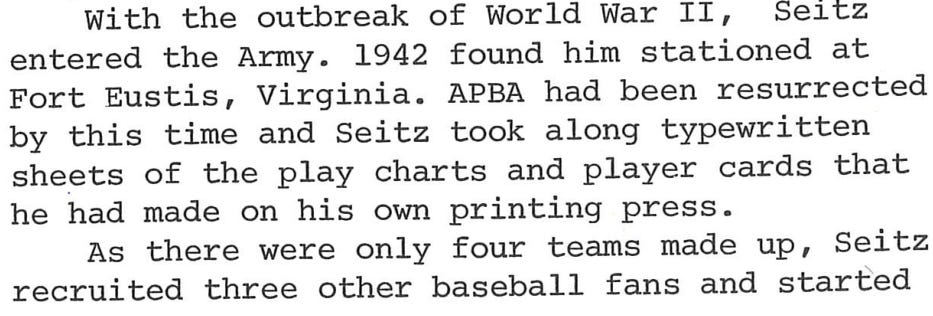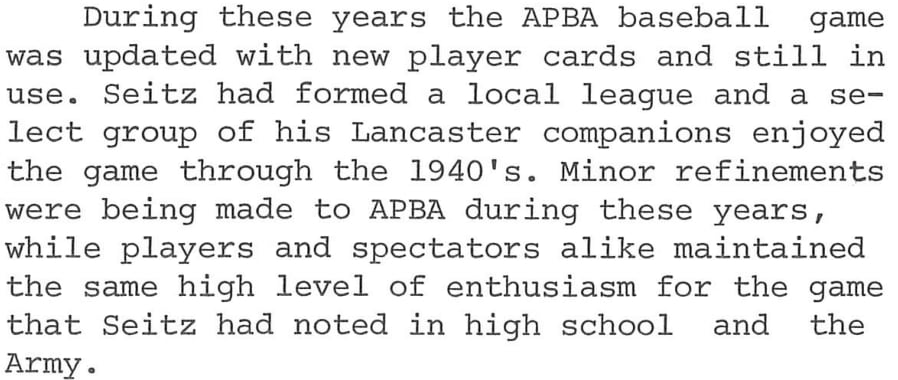From National Pastime To APBA
The world of old newspapers really is a treasure trove.
J. Richard Seitz, the man who created APBA, was born in 1918. His father was Howard Seitz, who you can find newspaper evidence for going back to 1899:
Howard Seitz was married in 1913:
And it’s clear that the famous 118 St. James Street house was occupied by the Seitz family before 1922:
J. Richard Seitz and his friends were interested in baseball long before National Pastime came along — and it seems that Seitz was interested in organizing:
Unfortunately, their team wasn’t always all that successful:
And Seitz himself wasn’t really much of a ballplayer. In fact, the local newspapers loudly announced the fact that he was cut from his team in 1934:
But we’re not here to write a biography of Seitz. Instead, we’re here to figure out how we got from National Pastime to APBA. And, well, it’s kind of hard to figure all that out.
My understanding is that the old A.P.B.A. notebook revealed that the draft league he and his friends set up continued through sometime in 1939. The boys had grown older by then, and, presumably, most of them had split off to go do other things.
Now, we do know that Seitz continued to make APBA cards in one form or another at that time. In fact, Robert E. Schmierer covered at least some of this time period in his somewhat controversial 1972 book Forty Years of APBA.
Schmierer’s book is controversial because it paints Seitz up as some sort of saint. However, it remains our best source of information for a lot of the stuff that happened in that time period, even if Schmierer neglected to note that National Pastime was another man’s game. It’s also possible that Schmierer didn’t actually know that the Seitz family had purchased the game.
We know that Seitz created some sort of demo version of the 1941 season, which he took with him to the army:
The Zack Handbook of APBA Cards incorrectly refers to this as the 1942 season:
It’s pretty clear from the context that the cards Seitz created were based on the 1941 season, not the 1942 season. More on that in a second.
Forty Years of APBA states that Seitz and some of his friends kept playing the game through the 1940s:
We don’t have much evidence of these beta cards, aside from one old letter to the editor in The APBA Journal that has been largely ignored over the years. I think this letter is legitimate; what do you think?
Personally, I believe this. And I’d argue that the history of APBA’s first seasons of the past back this up.
APBA’s first retrospective season, 1949, came out in 1974. This season is famous for its unfortunately exaggerated number of walks. Of course, if Seitz still had a copy of his prototype version or the notes from it, making another version of 1949 wouldn’t have been too hard.
The second retrospective season was 1930, which came out in 1975. 1930, of course, was the season that the original National Pastime was based on, and was a season near and dear to Seitz’ heart.
And the third season? Well, that was 1941, which came out in 1977. This is the reason why I’m convinced that the season Seitz took with him to boot camp was 1941, not 1942.
We’ll take a look next at the National Pastime boards and how Seitz turned them into the first APBA boards.















